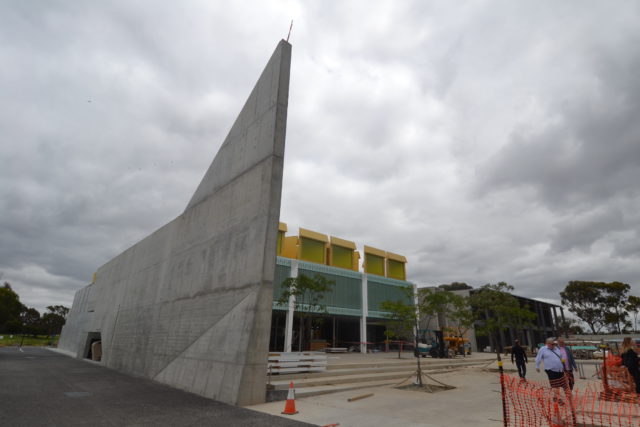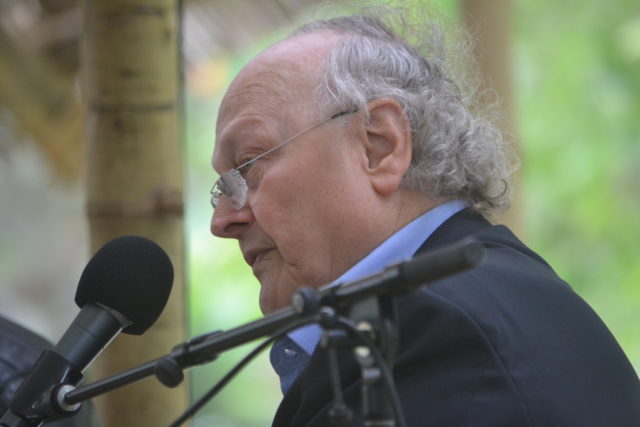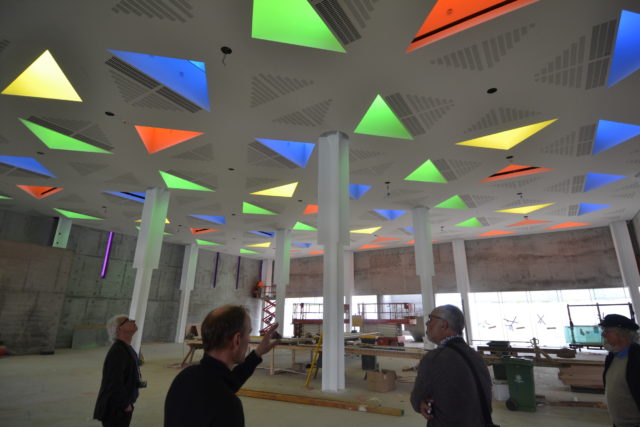In the presence of a masterpiece
Every once in a while as I walk through a building that I have never visited before, I am overwhelmed by the feeling that I am in the presence of a masterpiece.
This is what I sensed last weekend during a visit that was part of an architectural tour of Melbourne. Adding to the sense of wonder was the knowledge that my colleagues and I were among the first to experience a building that, when complete, is bound to grace the cover of every architectural magazine in the world.
The subject of my admiration is the largest work by Australia’s only Pritzker prizewinning architect Glenn Murcutt – a contemporary mosque in Newport, a 20 minute train ride from central Melbourne.
Following the visit to the mosque, our group of Wellington architects heard more from the master himself at a public talk where he was ‘in conversation’ with another noted Australian architect Sean Godsell.
It was a rare glimpse into the working practice of how Murcutt, an architect whose work I have long admired, practices. Note that Murcutt has neither a cellphone or an email address – rejecting both as unnecessary distraction from the business of design.
The story of Murcutt’s involvement in the Newport mosque starts like this. Ten years ago, after serving as a judge on the Aga Khan Award for Architecture, he was approached by the Australian Islamic community who were looking for an architect.
He took the job on subject to there being no minarets and no domes. As he explained on Saturday, he did not want to be involved in replicating a traditional mosque.
The Sydney-based Murcutt joined with Melbourne architect Hakan Elevli to design what is clearly a globally significant ground breaking contemporary design.
He persuaded his clients that the minaret’s function of calling the worshippers to prayer, is now obsolete as this purpose is now performed by the cellphone. A ‘minaret wall’ at the entry references this symbolism.
As to the dome, its function was to introduce light into the prayer space. The roof is covered with skylights which glow at different times of the day in the four primary colours of Islam.
He wanted the building to be open, transparent and inviting. Any faith can pray there, but the fundamental Islamic principles of construction, praying in the direction of Mecca, and the separation of the genders, are clearly expressed.
(Although Murcutt rather subversively introduced a side stair between the ground and upper floors saying ‘I hope that within ten years the stair will have some women coming down and some men going up’.)
I was surprised at how passionate and articulate the man was for his 82 years.
A slightly Islamaphobic question from the audience led Murcutt to respond that the rise of extremism and the consequent backlash reinforced his belief that the design he conceived 10 years ago to be open and welcoming, was the right one.
The building will be a model for the religion’s connectivity with other societies around the world.
He somewhat proudly told his audience that some lapsed Muslims have been so inspired by the building that they have re-joined the faith.
Murcutt’s masterful re-interpretation of Islamic architecture demonstrates the integration and healing power of great architecture.



